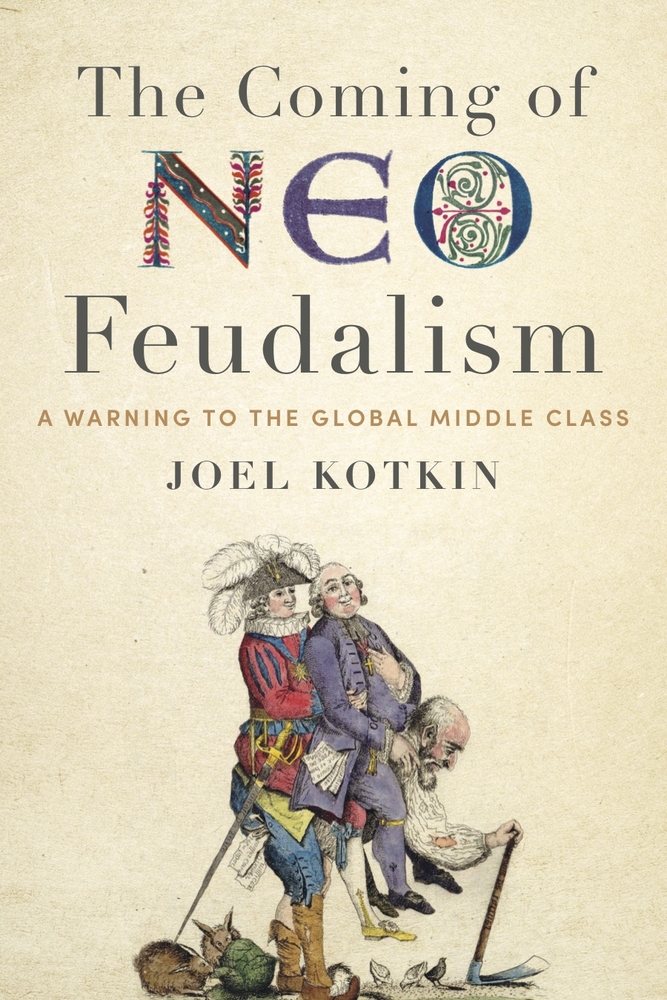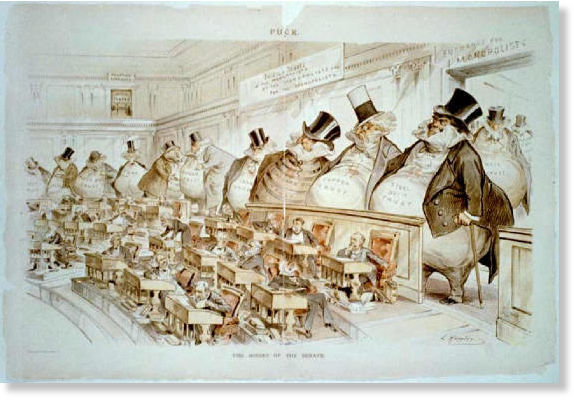Aberdeen, SD. There is something of a cottage industry now in books discussing class and inequality. In essence, these books contend, there are two Americas. One America is wealthy, educated, working in a professional job—one often demanding creativity of some sort—and living in or near cosmopolitan cities. The prospects for this America’s children are bright. The other America is poor, uneducated, unemployed or underemployed in low-level service-work or manual labor, living in crime-ridden urban areas or blighted rural America. The future for the children of this second America is bleak.
We’ve seen this theme depicted in Kay Hymowitz’s Marriage and Caste in America, illustrating how different family structures tend to entrench inequalities. Not surprisingly, marriage rates and marriage stability have much to say about the prospects for economic advancement of the next generation. Charles Murray’s Coming Apart noted much the same regarding family, adding class differences in religiosity and social engagement to the mix. Murray found these two Americas geographically and culturally isolated from one another. He noted the rise of “Super Zips,” zip codes with an unusually high congregation of college graduates, almost all centered around a small number of urban areas such as Washington, D.C., New York, San Francisco, and Seattle.
To these analyses of class division Chris Arnade has added the distinction between what he calls “front-row America” and “back-row America.” The former are the kids who sit in the front row in class, eager to please the teacher and gain all they can from their education. In the back row are the disaffected kids, there just because they must, at best not paying attention, at worst causing disruption to the learning of everyone else. Front-row kids will go to college, get good jobs, and pass on their privilege to their children, all the time thinking success is based on hard work and merit. The back-row kids will likely struggle to graduate high school, find a low-paying, low-status job—if they are lucky—and often find themselves trapped by drug or alcohol addiction. One could add to this list of books those of J.D. Vance, Michael Lind, and Tim Carney, all making the same essential point in different ways.

Enter Joel Kotkin, a well-published urbanist and futurist, with his own take on this phenomena, The Coming Neo-Feudalism: A Warning to the Global Middle Class. As the title suggests, Kotkin agrees with those who argue that new class divisions are arising and that a new hyper-elite has formed that represents a threat to democracy and upward-mobility. Kotkin’s contribution is valuable in two ways. The first is in Kotkin’s style. Kotkin’s book largely exists to present a bevy of information to the reader in the form of data and anecdotes that when added together presents a picture of an entitled elite amassing power for its own sake. That Kotkin is able to do so in a lively, readable fashion is a triumph. While the book can be redundant at times in piling on statistic upon statistic, in general Kotkin is effective in bringing empirical evidence to bear while developing trenchant analysis that gives meaning to his data-driven work. Secondly, Kotkin takes a more global view of the “new feudalism” than do most works. Kotkin impressively brings in data regarding Europe, China, and Japan that shows that the stratification of society based on education and geography is not merely an American phenomenon.
Again, as the title implies, the analogy to feudal Europe drives Kotkin’s analysis. Kotkin sees an increasingly entrenched oligarchy “grafted onto a powerful central state.” There are financial oligarchs who are akin to the great feudal lords. These oligarchs, Kotkin argues, are increasingly tech-based, with Apple, Google, Facebook and Amazon combining to attain wealth equivalent to the GDP of France. Kotkin uses the appellation “clerisy” to denote the educated professional class such as academics, people in the arts, and journalists who together approximate the medieval clergy and bureaucrats who profited from their association to feudal masters and who still have great influence over society. These two classes, says Kotkin, are akin to the First and Second Estates in feudal France. The Third Estate, a kind of yeomanry, is represented today by a class of small-business owners and lower-level professionals who still can attain economic prosperity but are ever more culturally marginalized and whose ability to move up the ladder of opportunity is quickly decreasing. Finally there is the vast working-class, modern day serfs, who work in low-skilled labor with little hope of ever moving up economically or socially.
Kotkin’s portrait of the First and Second Estates is devastating. For example, Kotkin reports that the top one hundred landowners in America own an area the size of New England, and growing. This is indicative of a dangerous concentration of wealth. This is also seen in the dominance of certain corporations in important sectors of the economy. “Google controls nearly 90 percent of search advertising,” writes Kotkin, “Facebook almost 80 percent of mobile social traffic, and Amazon nearly 40 percent of the world’s cloud business along with 75 percent of U.S. ebook sales. Google and Apple together provide over 95 percent of operating software for mobile devices. Microsoft still accounts for over 80 percent of the software that runs personal computers around the world.” With this economic power, a handful of tech giants are making inroads on dominating the culture as well, as their cash reserves allow them to influence entertainment, education, and other industries. California, once the land of dreams, now is defined by inequality. California exemplifies what Kotkin finds worldwide, namely cities with many jobs but only exorbitantly-prized housing and rural areas with affordable housing but few jobs.
As Murray documented well, the new feudal lords are isolated culturally as well as geographically from the rest of America. “As the emphasis on academic credentials grew,” Kotkin notes, “so did the advantage of the graduates from elite schools, who are mostly upper-class. These schools account for 7 percent of all college graduates, but 50 percent of the nation’s print journalists and 70 percent of the senior judiciary.” This narrow elite holds opinions far different from most Americans. Kotkin writes regarding journalists that “by 2018, barely 7 percent of U.S. reporters identified as Republicans, and some 97 percent of all political donations from journalists went to Democrats. Similar patterns are found in other Western countries too.”
Kotkin is influenced by the futurist Alvin Toffler. His dream is of a dynamic, vibrant world with lots of innovation and thus lots of opportunity for upward mobility. He cites positively Joseph Schumpeter’s description of capitalism as “creative destruction.” But the new elite, argues Kotkin, is not interested in such economic and social vigor: “Today’s tech leaders increasingly resemble an exclusive ruling class, controlling a few exceptionally powerful companies, and like aristocracies everywhere they are often resistant to any dispersion of their power.”
I suspect many Front Porchers will blanche at Kotkin’s invocation of Schumpeter’s famous phrase. Kotkin is a liberal in the very best sense of the term. He wants open markets, open minds, open societies. He believes strongly in progress, usually but not exclusively defined as economic growth and the hope that one’s children will have prosperity beyond that of their parents. There is much to be said for this vision, as it did so much to create a world of affluence that earlier generations could not imagine. Most Americans today live a life of comfort that even our grandparents could hardly imagine. Worldwide we have seen life expectancy and caloric intake skyrocket for the world’s poor while disease and infant mortality have declined precipitously in the last forty years. Education and literacy has spread. Much of this is due to the freedom of movement of people, goods, and ideas that the era of hyper-globalization has offered.

Yet, within Kotkin’s paean to the best of liberalism, there is a Porchy aftertaste. Kotkin does his fair share of bashing the Middle Ages, including the medieval Church. Surely some of this is warranted. Still, without being naïve about medieval society, one does wish to note that there is a difference between defending inequality in name of God and defending it in the name of self-interest. One might consider John Winthrop’s “Model of Christian Charity.” This is not a medieval document, to be sure, but it is a sound representation of how Christians might defend a more stratified society. Winthrop does this on the basis mutual obligation, a loving service to God and neighbor. Kotkin intuits this, perhaps against his ideological biases. He laments the sharp decline in birthrates across the industrialized world. For him it is a sign of a lack of vibrancy, a lack of hope in the future. He criticizes “post-familial attitudes” that have arisen in the West. It is precisely the pursuit of material self-interest that has turned many people away from family formation, as the commitment to “self-fulfillment” replaces loving, personal relationships. Kotkin cites this quote from Facebook founder Mark Zuckerberg: “We may not own a car. We may not have a family. Simplicity in life is what allows you to focus on what’s important.” For Zuckerberg the loving commitment to family is not “what’s important.” Kotkin clearly disagrees.
Kotkin is also a critic of working conditions brought about by the global economy. Kotkin reports that Apple employs 700,000 people in China, ten times its employment in the United States. “These workers,” says Kotkin, “suffer conditions that have led to illegal strikes and suicides; workers often claim they are treated no better than robots.” Kotkin also laments the decline of labor unions. In the past “unions often set hours and benefits, but many low-status workers today are sinking into what has be described as the ‘precariat,’ with limited control over their working hours and often living on barely subsistence wages.” The reason for poor labor conditions is precisely that in a global economy in which efficiency and profit are the primary commitment, the good of labor is considered secondary.
In antebellum America George Fitzhugh argued that Northern factory workers were no better off than Southern slaves. That was an exaggeration, but as I argued in my book on Lincoln and statesmanship, Lincoln did not see wage labor as free labor. An economy that gives labor no say in how a business in run, no ownership or possibility of ownership of productive capital, which relegates a majority of workers to what Lincoln called the “mud-sill” of drudgery is not a free economy. Free labor allows the individual to take part in both labor and capital; he is both a worker and a “boss.” This is best done in something like a small proprietorship, or working a small farm, or in a larger enterprise with some element of workplace democracy. Kotkin realizes that unfettered globalization leads to the centralization of wealth in a few hands, those few hands then engaging in obscene levels of rent-seeking.
Kotkin bemoans the collapse of civil society and community building institutions: “The downward economic trajectory of the working class has been amplified by cultural decline. The traditional bulwarks of communities—religious institutions, extended family, neighborhood and social groups, trade unions—have weakened generally, but the consequences are most damaging for those with limited economic resources.” The dedication to self-expression, to living as an authentic self, to liberation from constraints, has not brought about an age of authenticity, but an age of anxiety. Here Kotkin implicitly recognizes the shortcomings of “creative destruction.” The notion that unbounded creativity was going to bring about human flourishing now seems naïve. Instead we have drug deaths, suicides, the demographic suicide of low birth rates, and rising rates of depression and clinically diagnosed anxiety disorders. Human beings are personal, relational beings. To treat them as utility maximizing self-interested consumers is to treat them as something beneath human dignity. Again, Kotkin does not explicitly connect his critiques of the decline of meaning making institutions to the idolizing of self-expression inherent in free market ideology. The critique, however, is there if latent. Kotkin even manages to work in a Wendell Berry reference: “Wendell Berry, the Kentucky-based poet and novelist, observed that the ‘great question’ hovering over society is ‘what are people for?’ By putting an ‘absolute premium on labor-saving measures,’ we may be creating more dependence on the state while undermining the dignity of those who want to do useful work.” One wonders what the market value of dignity is today.
Kotkin’s book is more diagnostic than prescriptive. A “solutions” chapter seems tacked on at the end. The one solution he commends to our attention is educational. He believes that we may be creating a “posthistoric man” who is “cut off from the traditions and values of our civilizational past.” Many of today’s culture-crafting institutions—educational, political, artistic—lack a commitment to Western civilization. This has been witnessed in recent days as the cancel-culture has been in overdrive, seeking to erase all remnants of any opinion held more than a year ago. One wonders if we have a memory hole large enough to hold all the culture and history we are now shoving into it. Kotkin is surely correct when he opines that “universities could now be accelerating the decline of liberal culture by graduating students who too often have not learned what brought it into existence.”
Academia, in general, has deep commitments to what Charles Taylor would call a “subtraction story,” one that believes that the past was benighted, ignorant, superstitious, and—what is worst—intolerant. Subtract all of this and we can have blissful liberation. This is akin to Wesley Yang’s “successor ideology,” recently highlighted by Ross Douthat, where the one sin is the apostasy of “retrogression” as articulated by Adrian Vermeule. The pervasiveness of this ideology has rendered most universities enemies of civilization. Kotkin is correct that many university graduates, especially those from elite institutions who will become part of the new feudal hierarchy, are essentially “trousered apes” or “men without chests” as described by C.S. Lewis in The Abolition of Man. One of the few silver linings to the COVID crisis, quickly followed by mass rioting and attempts at Jacobin cleansing of all institutions, is that perhaps more and more people are seeing higher education today as a lost cause. The time may be here simply to raze higher education establishments and start over.
While those of us who are academics will be flattered by Kotkin singling out higher education as in particular need of reform, one wishes Kotkin would make a something of an economic or institutional argument as well. He really has no solutions other than to transform education so people better appreciate the roots of the Western order. He is correct, but the fruits of such reform will take a generation to ripen. In the near future a vigorous use of anti-trust law, a rethinking of free trade, and a simplifying of the regulatory and tax structures so individuals can more easily start a small business seem like steps in the right direction. The global middle class of Kotkin’s subtitle must unite with the working class for a new Magna Carta for the 21st Century, one that will, in Lincoln’s words, make us “independent of crowned-kings, money-kings, and land-kings.”












